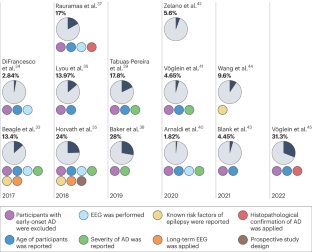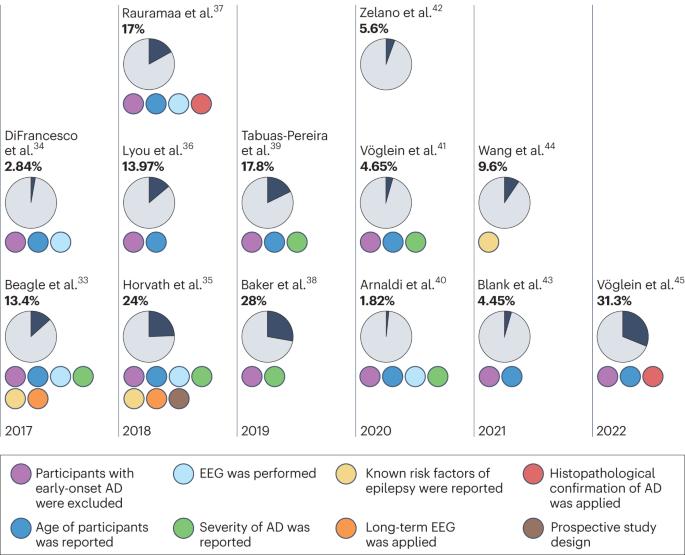Epilepsy and epileptiform activity in late-onset Alzheimer disease: clinical and pathophysiological advances, gaps and conundrums
IF 28.2
1区 医学
Q1 CLINICAL NEUROLOGY
引用次数: 0
Abstract
A growing body of evidence has demonstrated a link between Alzheimer disease (AD) and epilepsy. Late-onset epilepsy and epileptiform activity can precede cognitive deterioration in AD by years, and its presence has been shown to predict a faster disease course. In animal models of AD, amyloid and tau pathology are linked to cortical network hyperexcitability that precedes the first signs of memory decline. Thus, detection of epileptiform activity in AD has substantial clinical importance as a potential novel modifiable risk factor for dementia. In this Review, we summarize the epidemiological evidence for the complex bidirectional relationship between AD and epilepsy, examine the effect of epileptiform activity and seizures on cognition in people with AD, and discuss the precision medicine treatment strategies based on the latest research in human and animal models. Finally, we outline some of the unresolved questions of the field that should be addressed by rigorous research, including whether particular clinicopathological subtypes of AD have a stronger association with epilepsy, and the sequence of events between epileptiform activity and amyloid and tau pathology. Growing evidence suggests a bidirectional relationship between Alzheimer disease and epilepsy. This Review summarizes the epidemiological evidence and explores the potential mechanisms that underlie the effects of epileptiform activity on cognition in people with Alzheimer disease.


晚期阿尔茨海默病的癫痫和癫痫样活动:临床和病理生理学进展、差距和难题。
越来越多的证据表明阿尔茨海默病(AD)与癫痫之间存在联系。晚发癫痫和癫痫样活动可比阿兹海默病的认知功能衰退早数年,而且癫痫的存在已被证明可预示疾病进程的加快。在注意力缺失症的动物模型中,淀粉样蛋白和 tau 病理学与皮质网络过度兴奋有关,而这种过度兴奋先于记忆力衰退的最初迹象。因此,检测 AD 中的痫样活动作为痴呆症潜在的新型可调节风险因素具有重要的临床意义。在本综述中,我们总结了 AD 与癫痫之间复杂双向关系的流行病学证据,研究了痫样活动和癫痫发作对 AD 患者认知能力的影响,并讨论了基于人类和动物模型最新研究的精准医学治疗策略。最后,我们概述了该领域的一些未决问题,这些问题应通过严谨的研究加以解决,包括特定临床病理亚型的AD是否与癫痫有更密切的关系,以及痫样活动与淀粉样蛋白和tau病理学之间的事件顺序。
本文章由计算机程序翻译,如有差异,请以英文原文为准。
求助全文
约1分钟内获得全文
求助全文
来源期刊

Nature Reviews Neurology
医学-临床神经学
CiteScore
29.90
自引率
0.80%
发文量
138
审稿时长
6-12 weeks
期刊介绍:
Nature Reviews Neurology aims to be the premier source of reviews and commentaries for the scientific and clinical communities we serve. We want to provide an unparalleled service to authors, referees, and readers, and we work hard to maximize the usefulness and impact of each article. The journal publishes Research Highlights, Comments, News & Views, Reviews, Consensus Statements, and Perspectives relevant to researchers and clinicians working in the field of neurology. Our broad scope ensures that the work we publish reaches the widest possible audience. Our articles are authoritative, accessible, and enhanced with clearly understandable figures, tables, and other display items. This page gives more detail about the aims and scope of the journal.
文献相关原料
| 公司名称 | 产品信息 | 采购帮参考价格 |
|---|
 求助内容:
求助内容: 应助结果提醒方式:
应助结果提醒方式:


